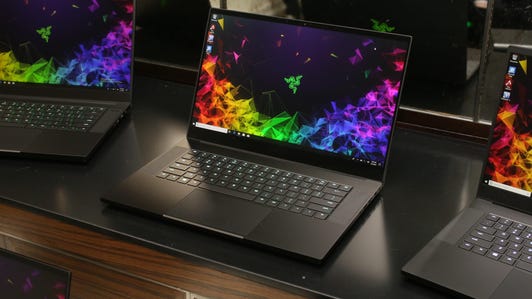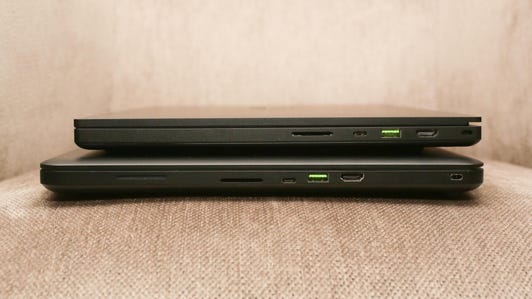This story is part of The 2010s: A Decade in Review, a series on the memes, people, products, movies and so much more that have influenced the 2010s.
When I started at CNET 10 years ago my beat was laptop reviews. I admitted, even then, that I wasn’t terribly interested in laptops, and I’m still not. What I was excited about was the fuzzy zone where tablets promised to swoop in and take over. Or a time when smartphones could transform into computers that do everything.
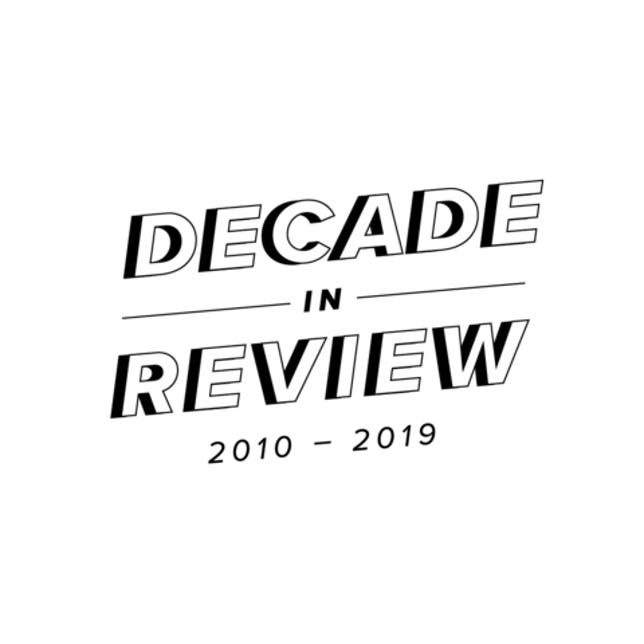

The first inkling that the fuzzy zone could happen came on Jan. 27, 2010, when Apple introduced its first iPad. Technology reporters saw a very large iPhone. Everyone else saw a relatively affordable tablet that brought an easier way to look at the web, or movies.
Apple’s vision won many people over. But it wasn’t the entire answer. In 2010, I still used a laptop at work (a ThinkPad), and a 2008 MacBook at home. Our office stored files on servers that we accessed in directories, but I kept a lot of things offline. It was a Mac and PC world, peppered with app store possibilities on the fringes. And though I bought that first iPad in 2010, using it to play games and type up notes with a keyboard, I wished it could be even more of a laptop replacement.
Ten years later, I still feel that way, and I’ve learned an important lesson. The last decade has turned our idea of computers inside out — after all, phones are our computers now — but in other ways, things are more similar than I ever expected them to be.
Come with me on a little memory trip.
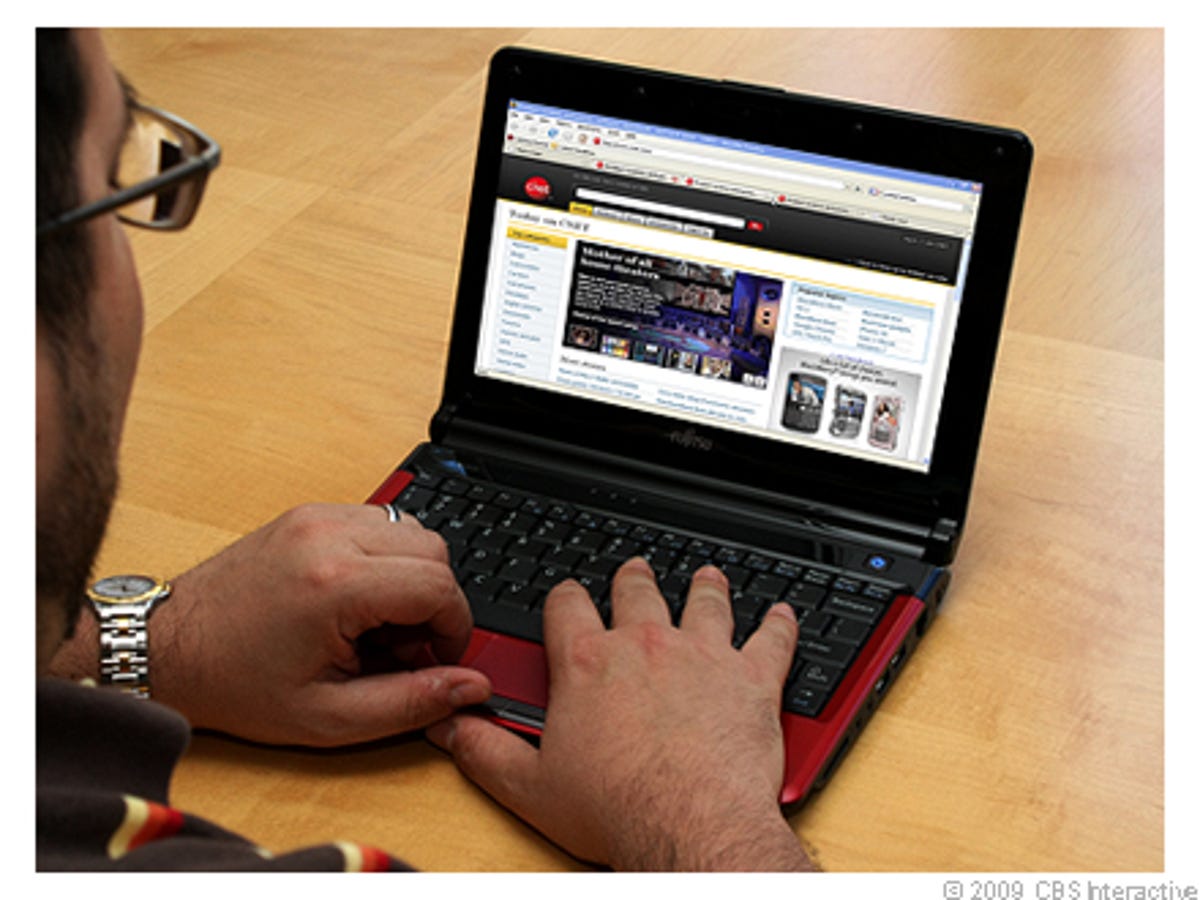

Me from 2009, working on the Fujitsu M2010 Mini.
Sarah Tew/CNET
Remember the Netbook
Cheap plastic laptops powered by Intel Atom-based processors were the thing to get back when I started CNET in 2009. In fact, they were so popular that I seriously felt that Netbooks were better than iPads. Once upon a time.
Netbooks were pretty terrible to work on, although I once filed all my CES stories from one. But they were also a sign of the future: cheap laptops for everyone. When I looked through some of my very first stories at CNET from 2009, I remembered that Netbooks, while popular, weren’t tablets, and they only ran Windows XP or Linux.
Netbooks were the laptops for kids, and the casual laptops for everyone else. Their low price opened the door for cheaper tablets like Amazon’s Fire and Apple’s lower-end iPads. And for Google’s Chromebooks, which have become the modern equivalent of the $200 Netbook.
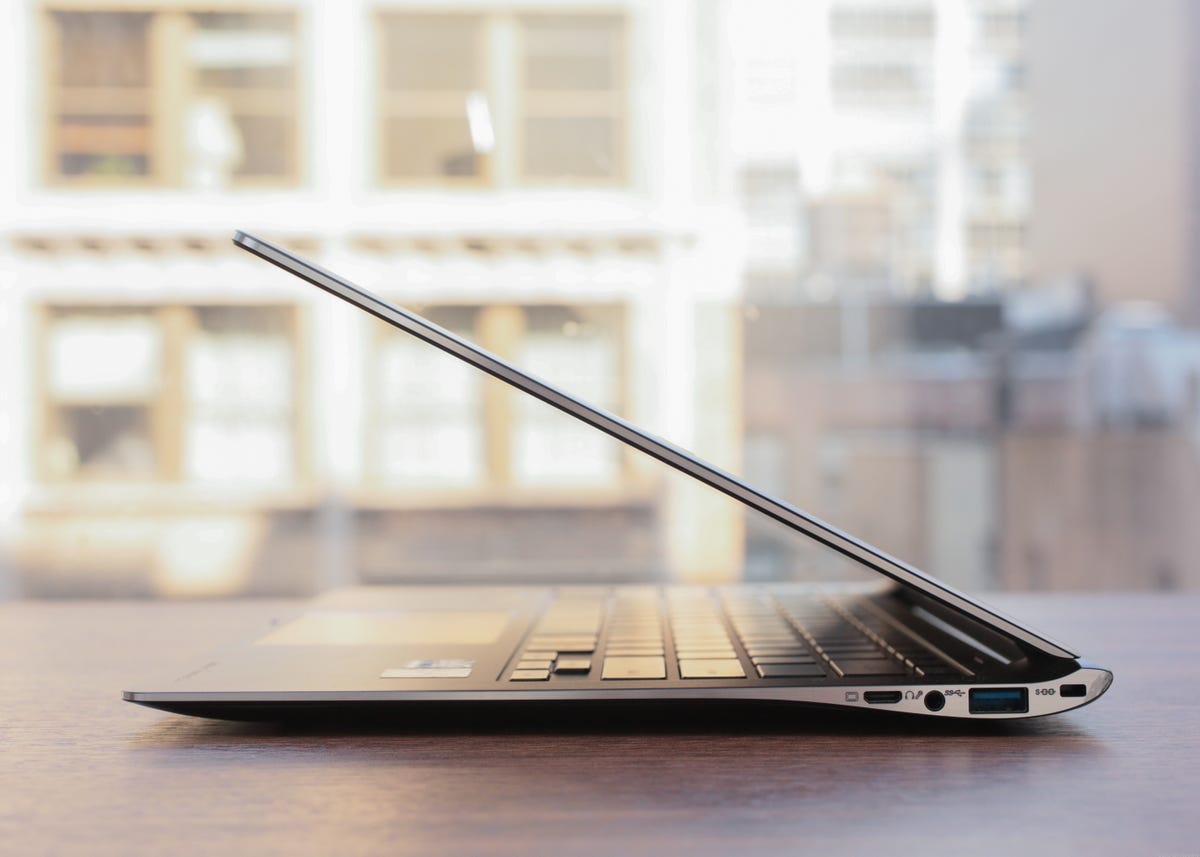

The Samsung Ativ Book 9 Plus (2013): classic ultrabook. AKA, every laptop now.
Sarah Tew/CNET
And… ultrabook
Laptops used to be so unwieldy you needed a backpack or computer bag to carry them properly. And battery life was awful. After the MacBook Air, Intel’s ultrabooks initiative led the way to slimmer, longer-lasting laptops that started using solid-state storage instead of spinning hard drives. We don’t call them ultrabooks anymore. We just call them computers.
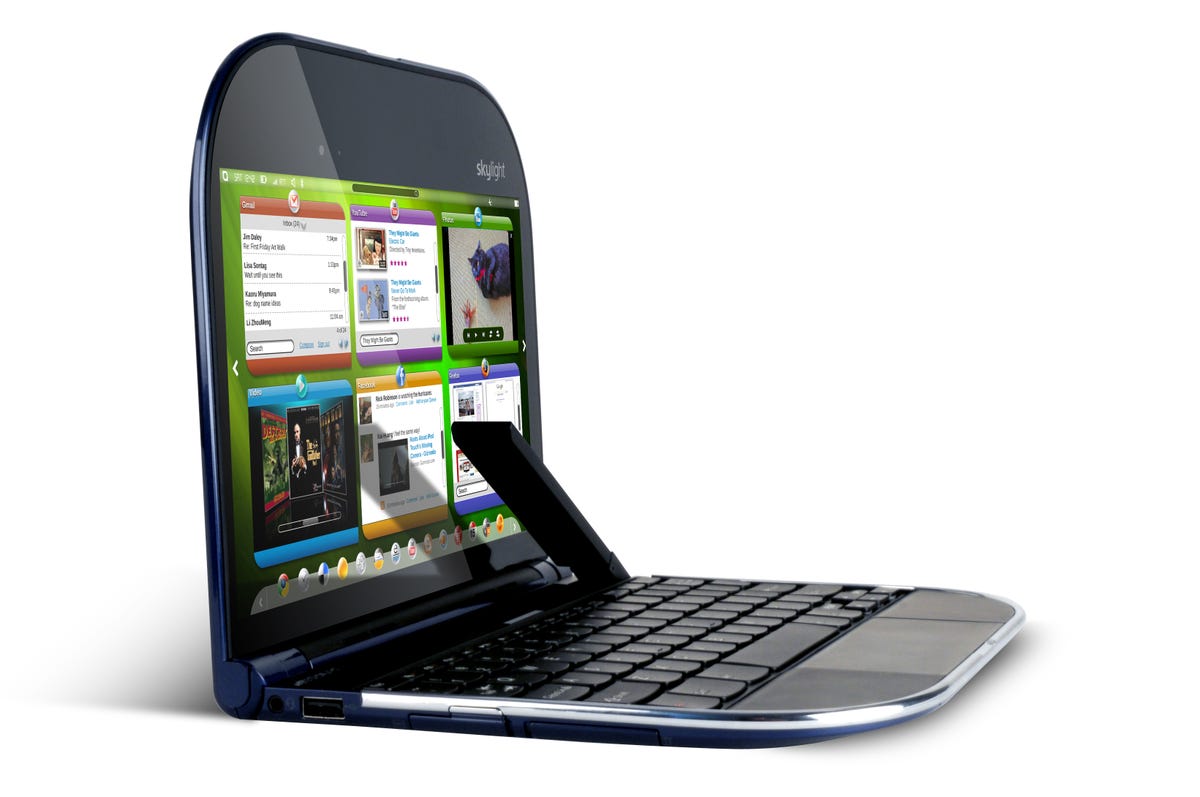

The Lenovo Skylight, 2010. Smartbooks were never a thing, btw, but there are tons of cellular laptops (and some with cellular chips, now)
Lenovo
And… smartbook?
Tiny cellular-enabled netbooks that were quick to connect, like phones: That was the idea behind smartbooks, which ended up being a marketing term from Qualcomm. I wrote a good handful of smartbook stories, before it became clear that these little netbook-like things were going to get ignored.
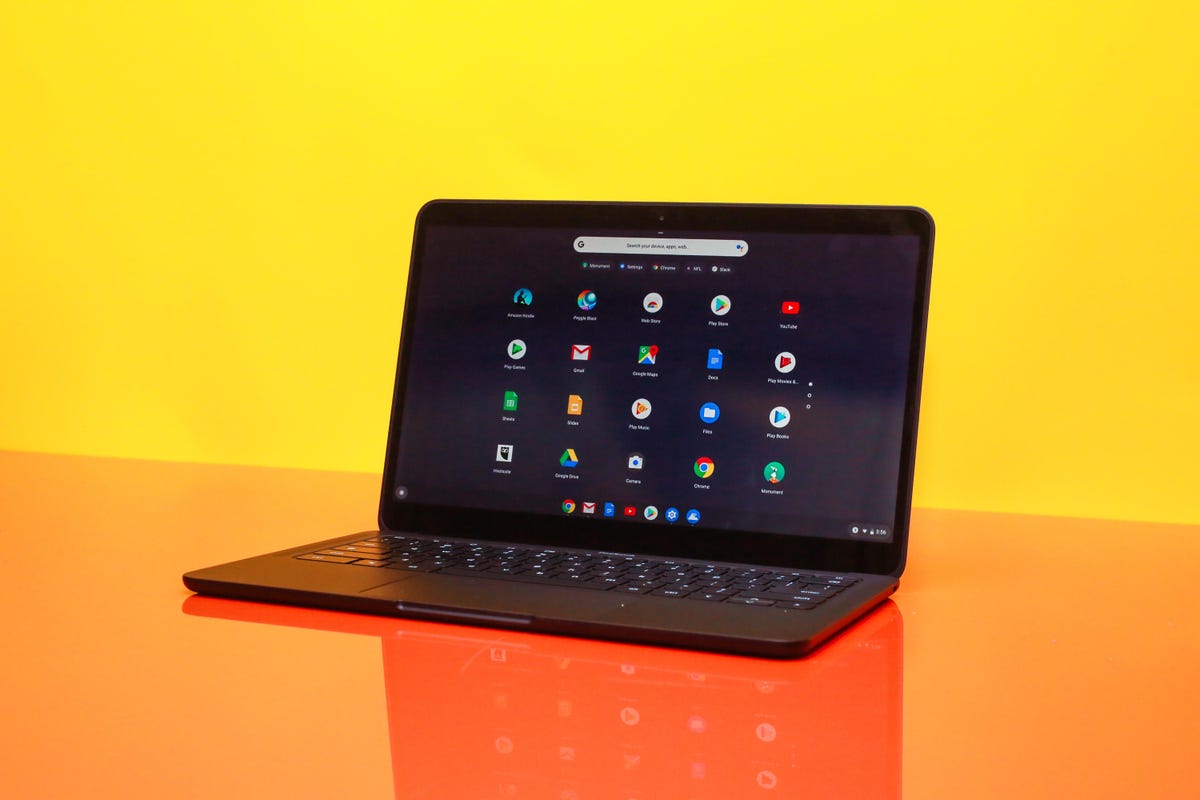

Google Pixelbook Go, 2019. Chromebooks are still around, and they’re very good.
Sarah Tew/CNET
Google’s Chromebooks proved the cloud was everything
Google’s mission to make a thin, browser-based computer seemed a little crazy at first. I reviewed one of the first Chromebooks in 2011, and while it was nicely designed (it was based on a Samsung netbook), it felt like way too much of a compromise: It was fast and simple, but it didn’t work offline and it had very little storage and few everyday apps that weren’t just glorified browser links.
But Google was on to something. Chromebooks took over as the cheap laptop that both families and a surprising number of schools use. My kid hasn’t used a MacBook, but knows how Chromebooks work.
Google’s cloud-based vision of office work is now the main place where I live. My office migrated to a corporate Google Drive-based system years ago. I write all my stories in Google Docs. I plan meetings in Google Calendar and Sheets. I do most of my office work in a Chrome browser. I’m writing this story in Google Docs right now.
My life in Google’s apps makes a Chromebook, today, a lot less absurd. Google won the infrastructure. Eight years later, as I’m reviewing Google’s latest Chromebook, I realize that nearly everything I do on a laptop is through a browser. While Chromebooks still aren’t perfect for everyone, they’re proof that Google rewrote the rules for how work is done.
I’m living in Google’s world, whether I’m using a Chromebook or not.


The original iPad (2010) and its keyboard dock. Do you remember?
Donald Bell/CNET
Enter the iPad
CES 2010 showed off something else that I’ve never forgotten: Lenovo’s U1 hybrid laptop concept. The U1 was my favorite thing at in Las Vegas that year, and it hinted at a laptop/tablet world to come.
But CES was completely overshadowed by Steve Jobs’ unveiling, just a few weeks later, of the first iPad.
With its simple design, the iPad went for a different approach: Instead of putting PC software in a tablet, it adapted the iPhone’s software for a larger display. It was more iPhone than Mac, and it had its own custom Apple processor, a mobile chip that hinted at the PC-running-on-ARM trend to come.
I’ve tried filing many stories on the iPad, and reviewed a ton of iPad keyboard cases. From the start I wanted the iPad to replace my laptop. That’s remained a dream for over nine years, now. I’ve gotten close, but never approached the moment.
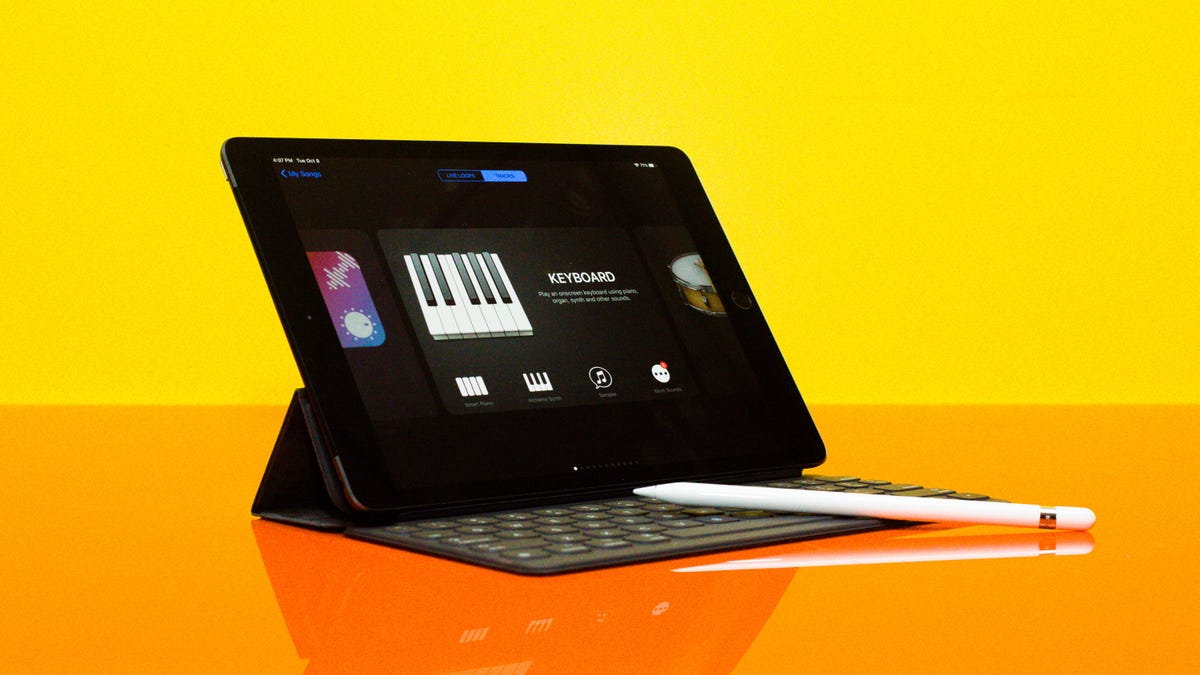

The entry-level iPad, 2019: keyboard case and Pencil support (but not included in box).
Sarah Tew/CNET
While writing this I went back and counted my previous stories in which I hoped the iPad could do everything my laptop could do. In 2010, I suggested that iOS and Mac OS could eventually merge. In 2012, I knew I wanted a trackpad. And then, year after year after year, I witnessed processing improvements, great new apps and a stellar new pressure-sensitive stylus on 2015’s iPad Pro. But as I wrote earlier this year, even now the iPad lacks just a few things that could make it my perfect laptop replacement.
The iPad hasn’t become a MacBook, and Macs and iPads still haven’t fused. But iPads have become as powerful as other computers, and are clearly capable of doing a lot more. I’m still waiting for an iPad to become my main computer — but at home, it’s the only thing my family uses besides a Chromebook.
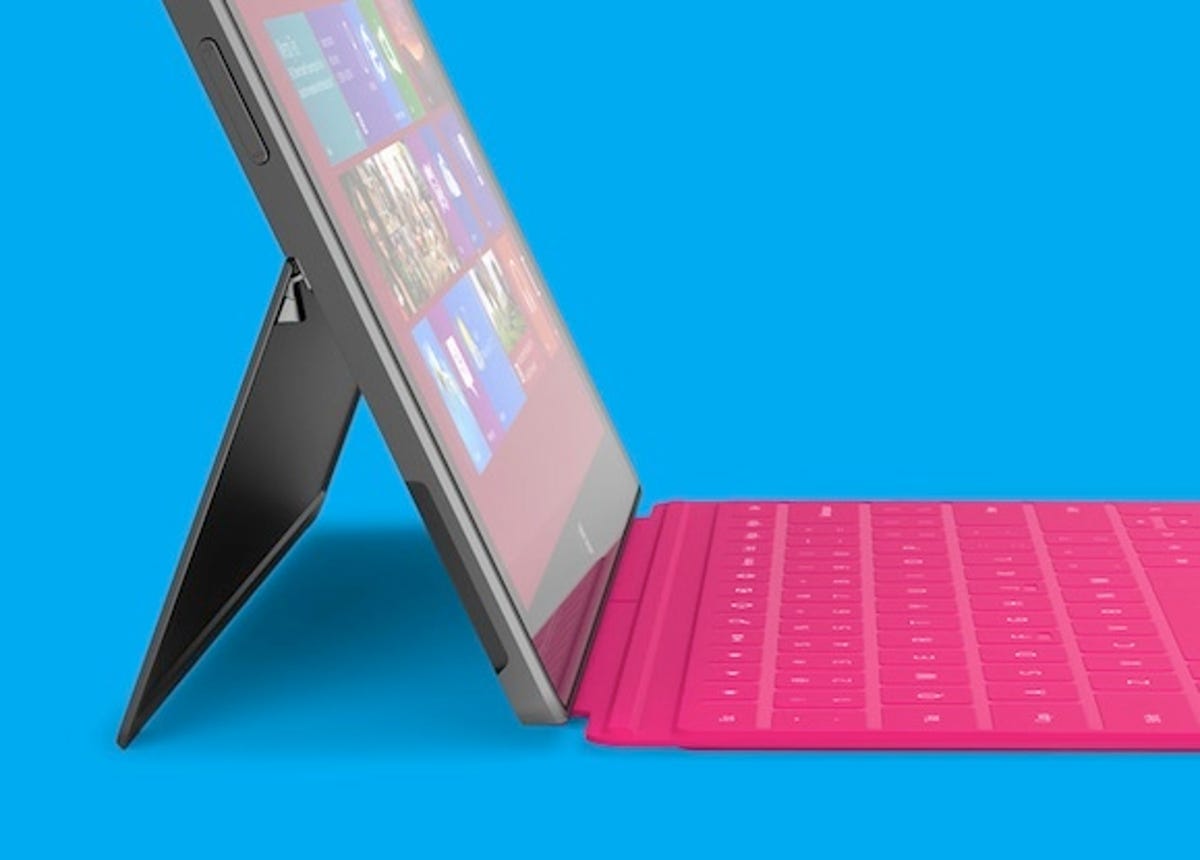

The Microsoft Surface tablet in 2012: tablet meets laptop.
CNET
Microsoft blew the PC apart and reassembled it again with Surface
While Apple has pursued two separate paths with iOS and Mac, Microsoft decided to reinvent the touch PC. The Microsoft Surface, unveiled June 18, 2012, promised a whole new Windows world that worked on tablets. Instead of splitting into two families, Microsoft focused on having all devices work in the same OS.
Windows 8 took a dive into touch computing that year, and ended up unleashing Windows laptops to do some really weird things. Hybrid laptops, laptops, detachables and lots of other bizarre forms blossomed in the next few years. Surface devices turned into large-screen touch desktops, and modular pro laptops. Windows laptops never disappeared, but touchscreen Windows computers are so normal now that we don’t even think about them.
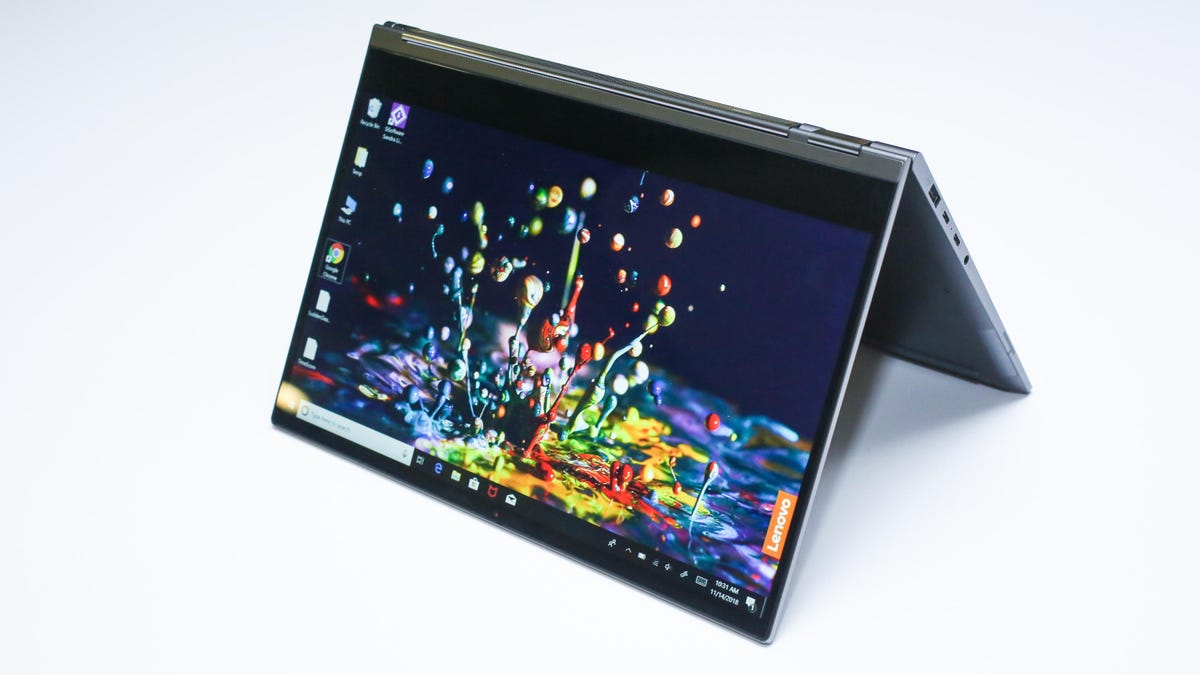

The Lenovo Yoga C930 (2019): bending flipping laptops are very normal now.
Sarah Tew/CNET
I wrote a field guide to the strange Windows computer forms in 2012 that’s still applicable for where things are in 2019. To me, the weird thing is that, while laptops got multiscreened and split apart in strange ways, they’ve settled down a bit. They have keyboards, still. They have trackpads. They’re recognizable.
Meanwhile, Apple kept plugging along with its Macbook Air and Macbook Pro, adding new features and making the faster and last longer. But Apple’s semi-touchscreen Touch Bar on Macbooks never really took off: It isn’t on Apple’s middle-range laptops at all.
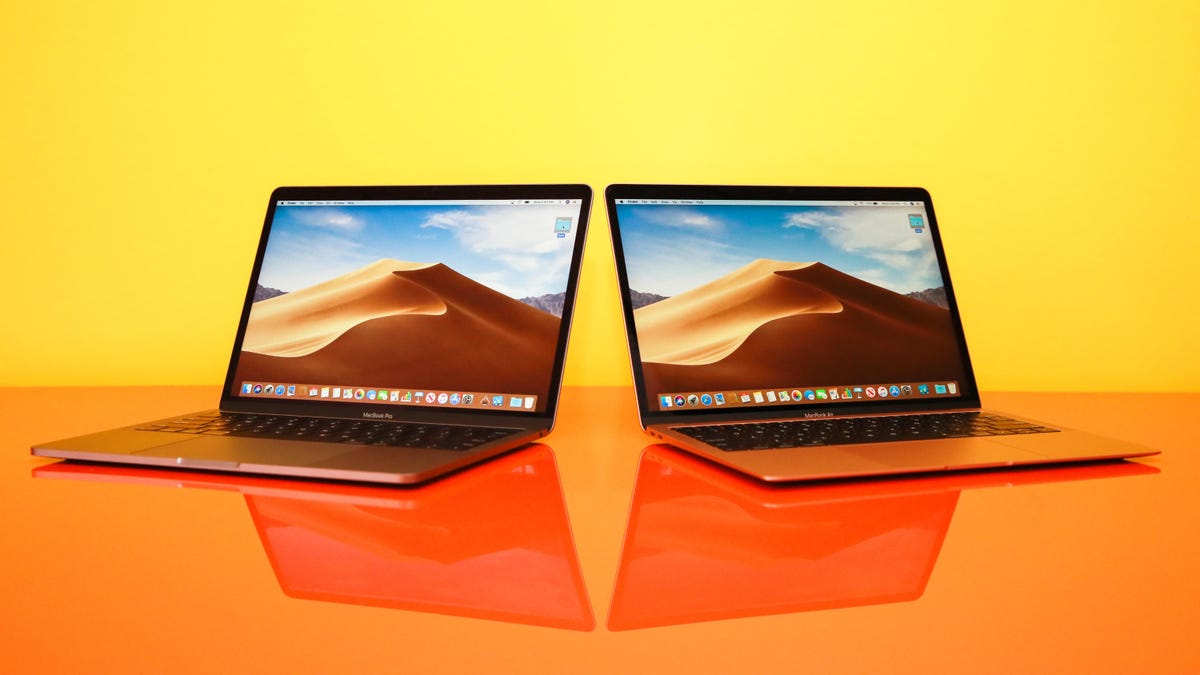

MacBooks: slim, and still here (with no touchscreen)
Sarah Tew/CNET
Phones as computers… an ongoing dream
Phones have become more powerful than anyone could have possibly imagined, but they’re still not a place where all work gets done. Many people have tried to fuse phones and laptops. I remember the Motorola Atrix in 2011, which docked a phone into a laptop chassis. In 2015, Microsoft thought it could turn a phone into a computer, too, with Continuum: It promised that a Windows phone could end up transforming into a computer… if you had a keyboard and monitor.
I reviewed Samsung’s phone-to-PC DeX dock in 2017, which promised the same dream, and was surprised that it (mostly) worked. Promises of multiple devices seamlessly streaming and beaming content from watch, to phone, to the big screen — like the conceptual and never-realized Neptune Suite. The promises, and even capabilities, have clearly been there. And yet it hasn’t happened.
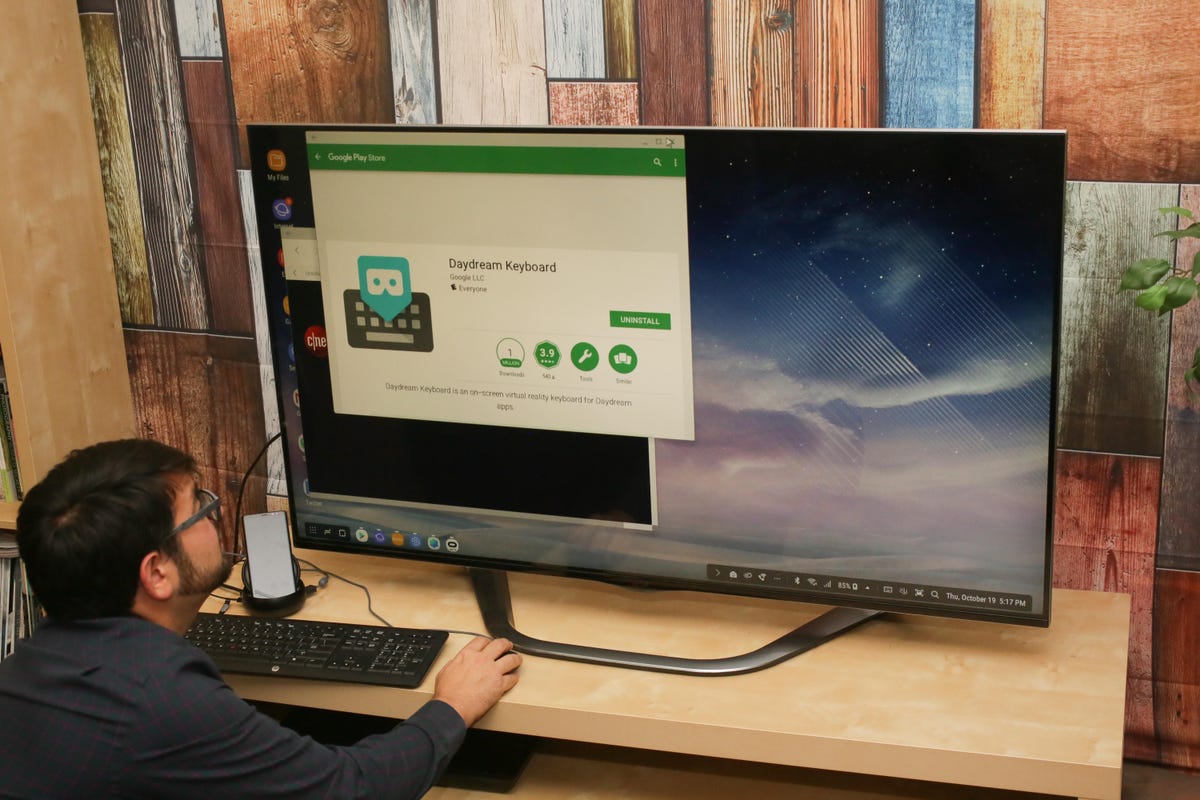

Setting up Samsung DeX with a TV as monitor (2017).
Sarah Tew/CNET
Nothing’s made me do my actual laptop work through a phone: not while wearing smartglasses, or connecting to a dock. The phone does a lot of things, but for the rest, I’ve got the laptop I’m writing on right now.
Maybe that moment is on the horizon. Microsoft’s dual-screened folding tablets, Surface Neo and Duo, look like other bold steps towards a blending of gadgets, where perhaps phones will become our laptops, and will transform as needed. I’ve seen these pitches before. I’ll be patient.
Weird computers and interfaces, there have been many
I’ve seen a ton of bizarre ideas in computers, some of which have caught on. Razer has been the source of most of them: The second-screened Razer Blade was way ahead of its time. The Razer Edge, which was a gaming tablet that could dock into a TV, predicted where the Nintendo Switch would go next. Razer’s Project Christine imagined modular PCs that could effortlessly swap parts, and well — in some ways, PCs are that modular now thanks to external plug-in graphics and fast-throughput Thunderbolt 3 cables.
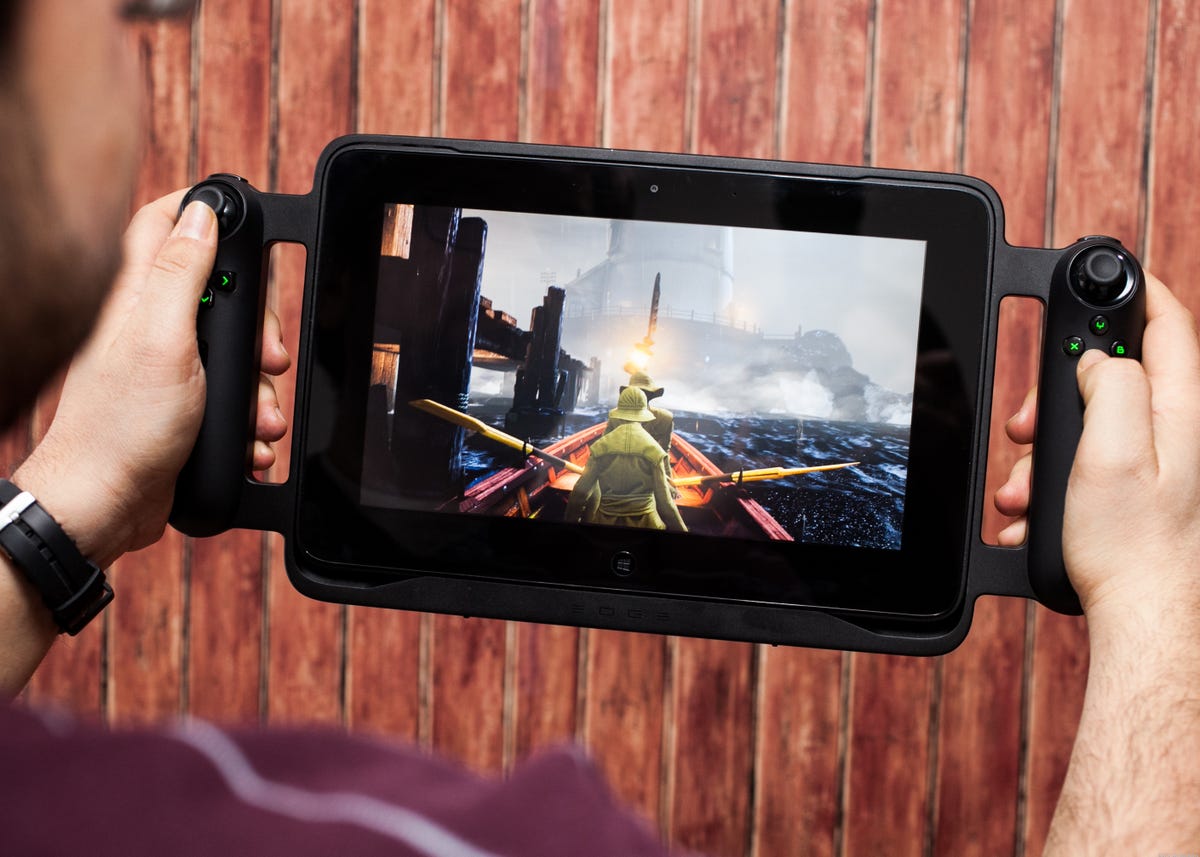

Razer Edge gaming tablet PC: totally predicted Nintendo Switch.
CNET
PCs also tried to break out into new interfaces, and largely failed. I tried using Leap Motion to control a computer with hand gestures. There have been PCs that tried to be 3D scanning workstations (HP Sprout), giant interactive wallscreens, and hey, remember tabletop computing? Or VR backpack PCs?
The computer world’s flirtations with VR and AR as new interfaces for office work haven’t make a difference for most everyday people, even if the tech has been making strides in enterprise. VR has become a powerful creative tool for 3D work, but at the same time, I don’t see anyone in my office with goggles on. But connecting via quick video chat has become so normal that the idea of telepresence is already embedded in office life. Maybe holographic telepresence is yet to come.
And yet, here’s my laptop
Google and IBM are dipping their toes into the mind-bending world of quantum computing. AR headsets, for all their challenges, could still become the way we surround ourselves with screens. 5G could blanket the world and enable instantaneous streaming of apps and experiences, melting the very definition of personal device.
Despite all that, I’m writing this decade-long computer retrospective on a laptop. My fingers are typing away on its very real physical keys, and I’m looking at words on a browser on my very flat but high-resolution screen. Yes, I’m working completely in a cloud-based app. Notifications keep popping up from my phone, which basically dovetails with my laptop in ways that make it hard to draw the line where one ends and the other begins.
I’ve been bored by laptops since at least 2011. But also, I’m OK with that. The future of how I connect with things — computers, watches, glasses, tablets, smart speakers and who knows what else — is still ever-changing. It’s just a more gradual process than I expected.


Now playing:
Watch this:
Are the Surface Pro X, Samsung Galaxy Book S the future…
9:34
Razer’s mid-2019 Blade gaming laptops glide along the cutting edge
